
Lieutenant Narwhal, you will take command of the Norwegian resistance and tie down as many Soviet units as possible in Norway.
Great ! Where is the Norwegian resistance ?
We have no idea. They are invisible to us as well.
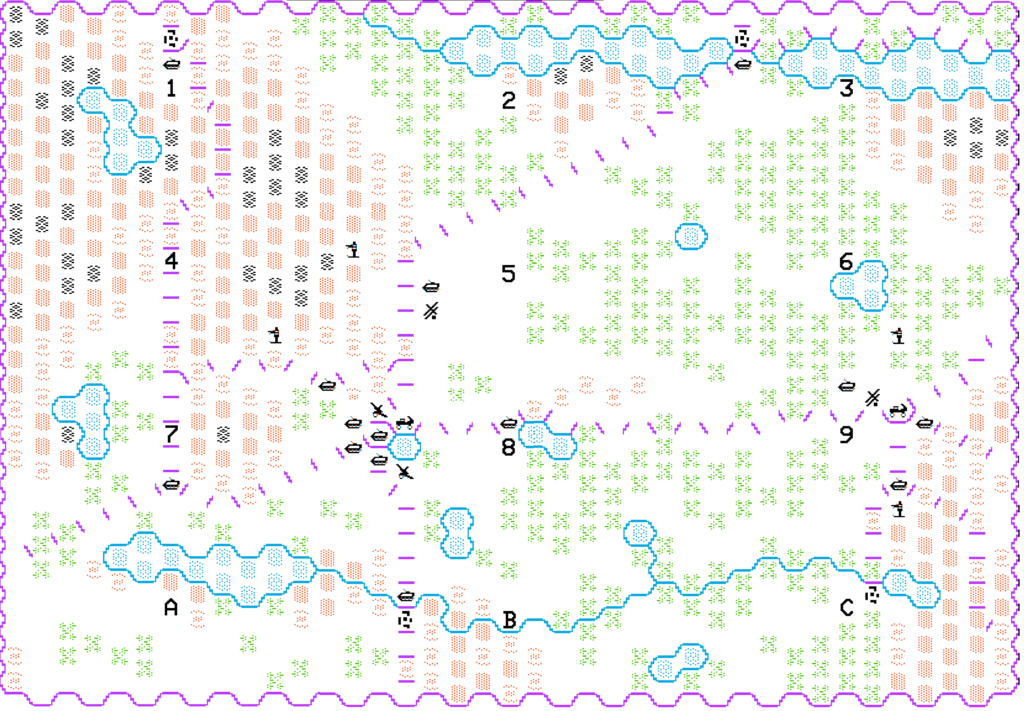
Released in October 1985, Norway 1985 is the final instalment in the When Superpowers Collide series and the last game that developer Roger Keating had to produce for SSI under a 1982 contract. For Keating, now a founder of SSG, the 1982 agreement felt like a lifetime ago and he viewed Norway 1985 as a mere contractual obligation. This may explain why the game features a simplified ruleset compared to its predecessors. It includes only 5 unit types (compared to 12 in Germany 1985), only 4 unit modes (compared to 8 in Germany 1985), and lacks features such as division management, air superiority system, delayed orders, and headquarters units. Despite these changes, the game still incorporates elements that give it a distinct Norwegian partisan atmosphere, such as specific stealth rules for NATO ski infantry and ski mortar units.
In Norway 1985, the objective for the Norwegian player is to capture as many cities, towns, and airports as possible from the Soviet enemy. This is not an easy task, as the Soviets start with control of these objective locations and have superior firepower. In the particular difficulty level being played, the Norwegians start with 21 units and will not receive any additional reinforcements, while the Soviets start with 22 units and will receive 15 more units throughout the campaign. However, the Norwegians have two key advantages:
- their units can cross over frozen lakes, mountains, and heavy rough terrain where Soviet units cannot follow, with the exception of the four Soviet ski infantry units.
- Additionally, their units can remain invisible in any terrain as long as they are not adjacent to a Soviet unit.

The 18 objective hexagons are spread all over the place, with the exception of 6 of them all grouped in the central crossroad where lies the only city on the map. Given there are also a lot of defenders there, I decide to ignore it and first grab all other objectives, in particular the ones in the East. I will use this opportunity to destroy all the isolated Soviet units, plus hopefully the Soviet reinforcements as they come.
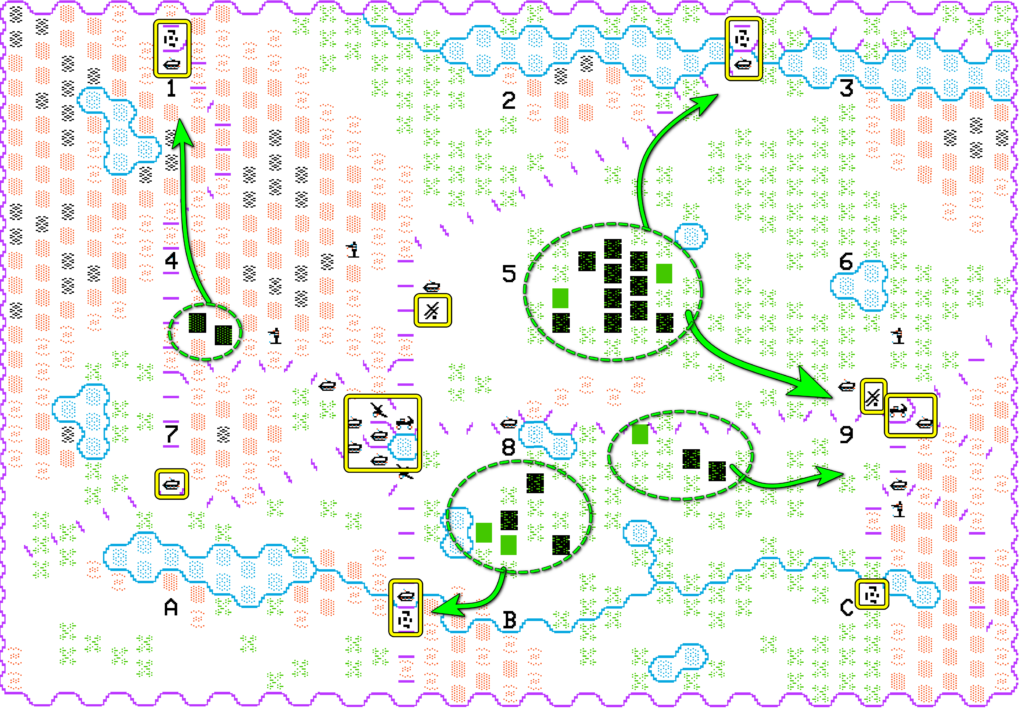
The first shots are fired turn 2 South of the city, as a patrolling Soviet APC encounters one of my hidden infantry. Detected, my units spring into action, occupying the Southern town :
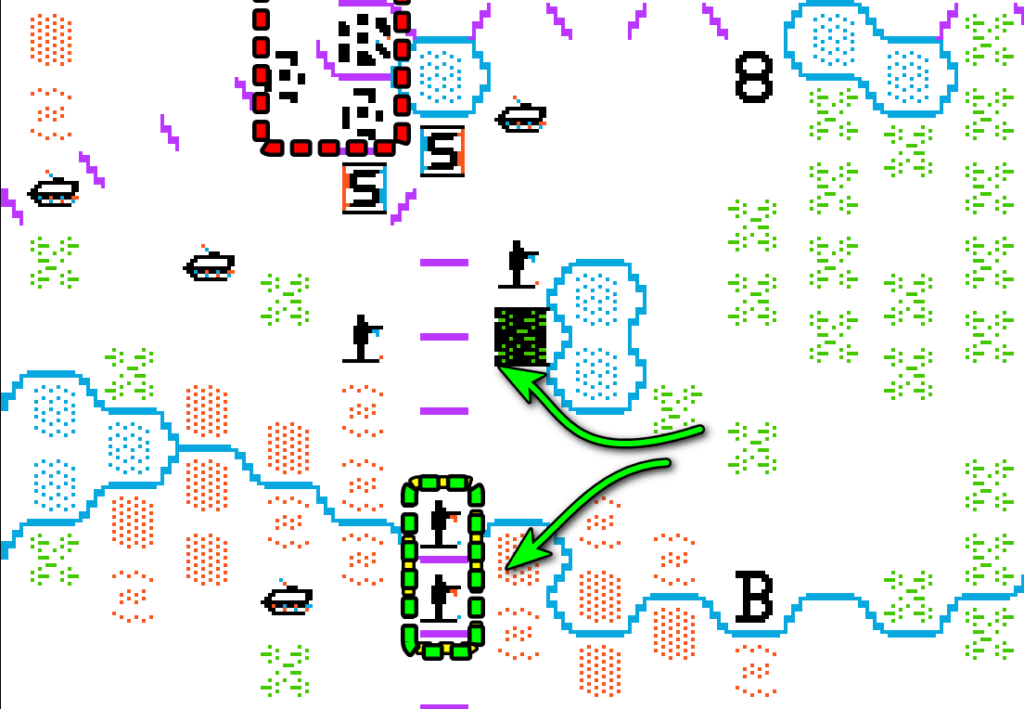
Of course, this town is way too close to the enemy main force, and by turn 4 I have to abandon it. My infantry abandons the town, scatters and hides again :

Meanwhile, in the East, the Soviets are hit from all sides by skiers appearing out of thin snow ! In Norway 1985, units can retreat several times in a turn, so to make sure I destroy as many units as possible I surrounded the Soviets before revealing myself – with devastating effects :
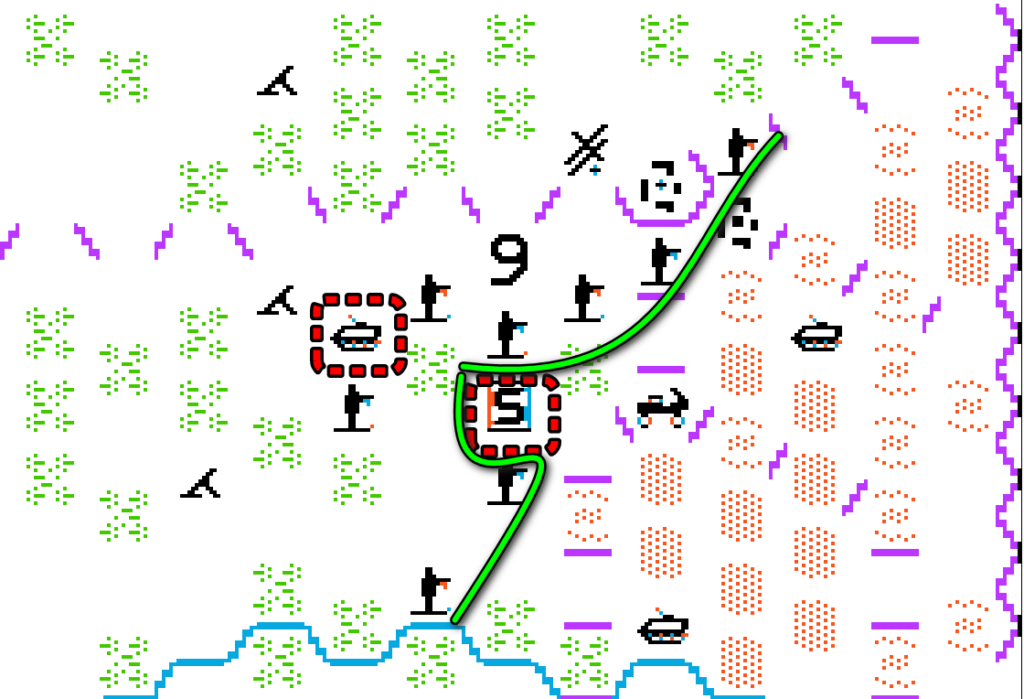
With the help of air support (which according to the Norway 1985 manual represents “helicopters”, so I guess the Norwegians have secret guerilla helicopters hidden in their forests), I soon occupy the airport and the town. Taking one of the two airports gives victory points and, as an added bonus, reduces enemy air support.
I take the Northern town without having to fight for it, and immediately prepare an ambush for the hapless Soviet APC sent to investigate :
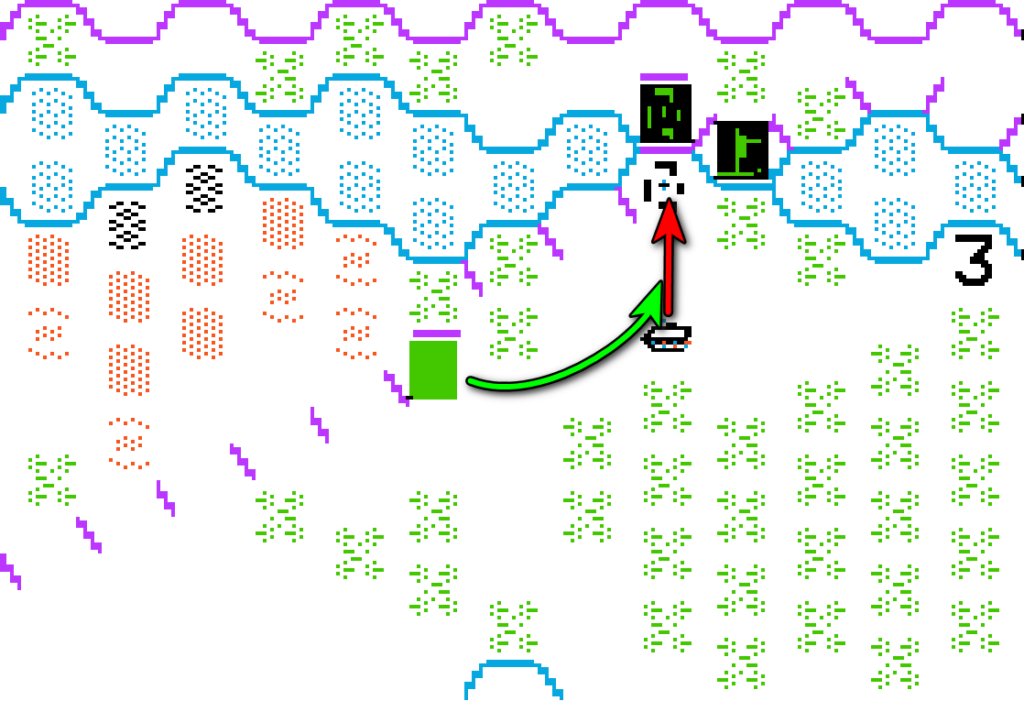
One turn later, I lay the exact same sort of trap in the Northwestern town.

Turn 7 I have recovered the Northern towns and I am about to liberate all the Eastern part of the map. I am sending all the forces made available by those successes (including half of the units involved in the liberation of the East) toward the main city, which starts to be surrounded :
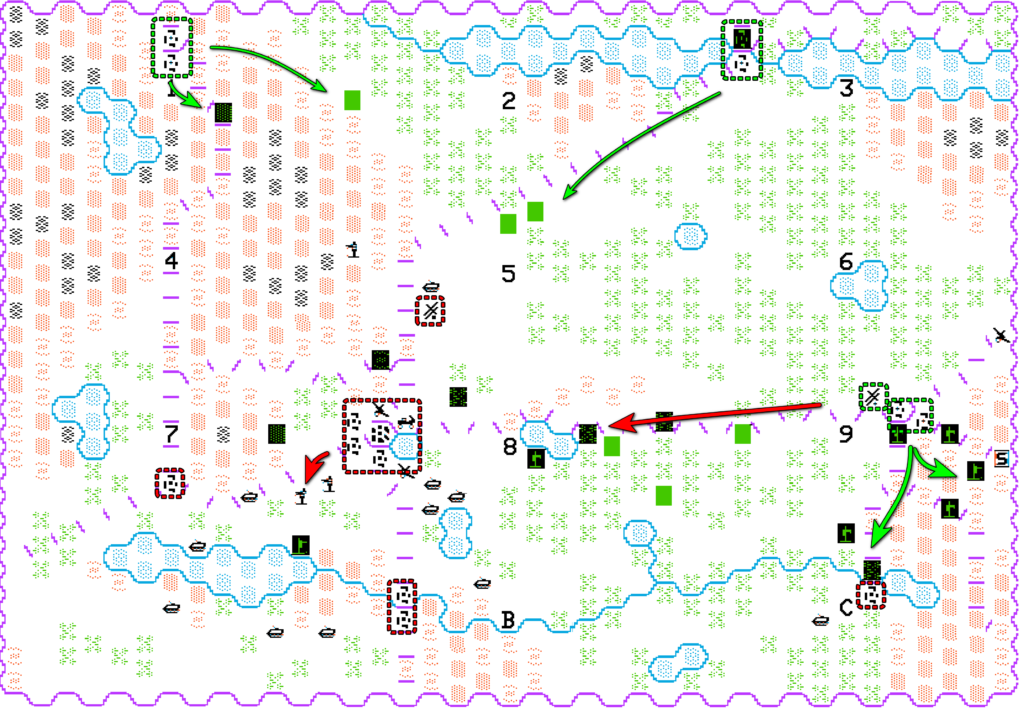
There are however dark clouds around the silver linings :
- I am still very late in points, and not reducing the gap. The Soviets had a headstart, because they control all objective hexagons at the beginning of the game :

- In the East, some Soviet infantry managed to flee toward the South. I don’t think they are going to be a problem, but I will not be able to remove all my units from the area,
- Near the main town, a Soviet ski patrol detected one of my hidden units, which is now surrounded.
This turned out to be a blessing in disguise, because the Soviet APCs left the city to ensure my unit is destroyed, just as I had finished surrounding the city :
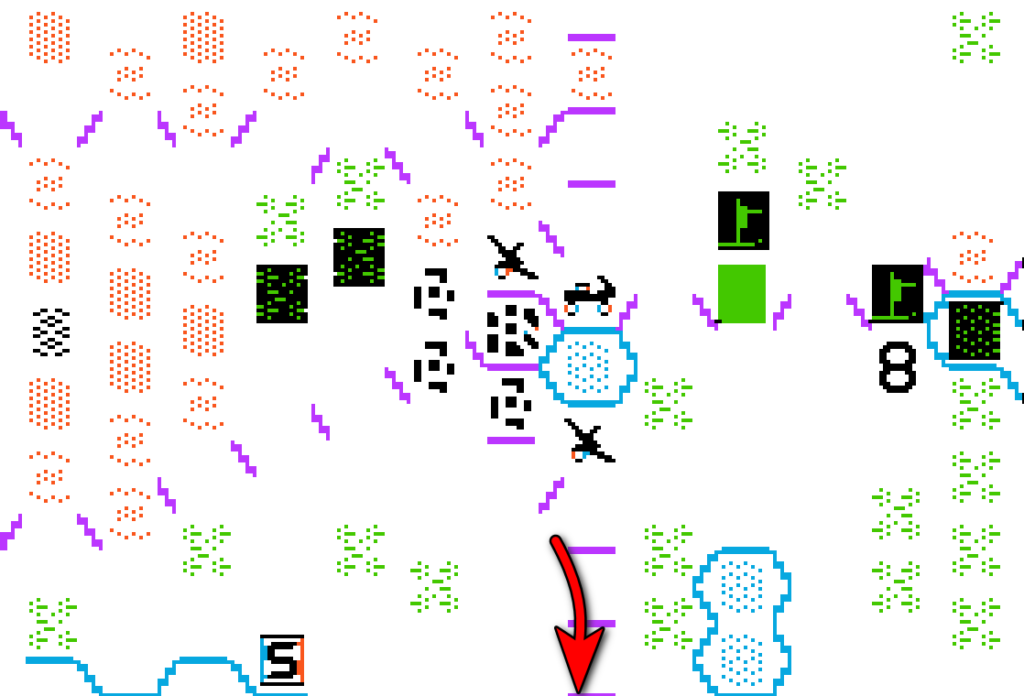
I attack from all directions, making sure to surround the enemy artillery immediately. In two turns later, all the Soviet artillery in the area is annihilated, and the city is fully mine. I even entrapped an APC trying to disentangle the artillery.

I push my advantage and manage to repulse the Soviet forces toward the South, destroying some units and liberating the South-Western town and half of the Southern village. The situation stabilizes there until the end of the game, my units not being in any condition to press on any further.
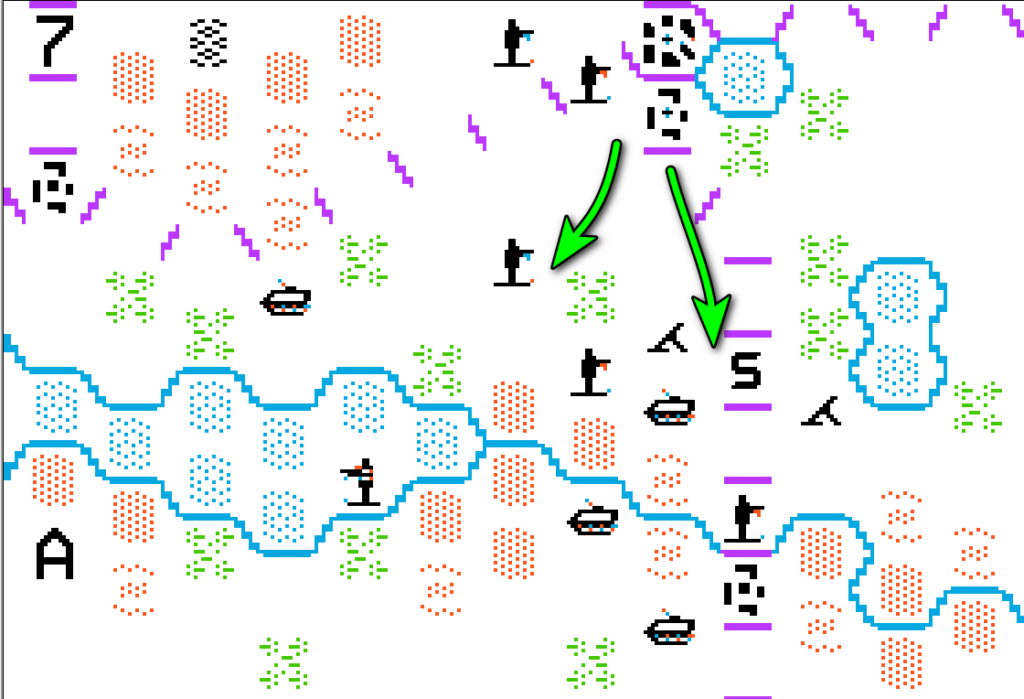
It is not all good news :
- In the North, my lone infantry is facing the last batch of Soviet reinforcements : 3 APCs. I have to abandon the Northern town, though I manage to slow down the Soviet mechanized infantry in a fighting retreat and they never reach the central airport.
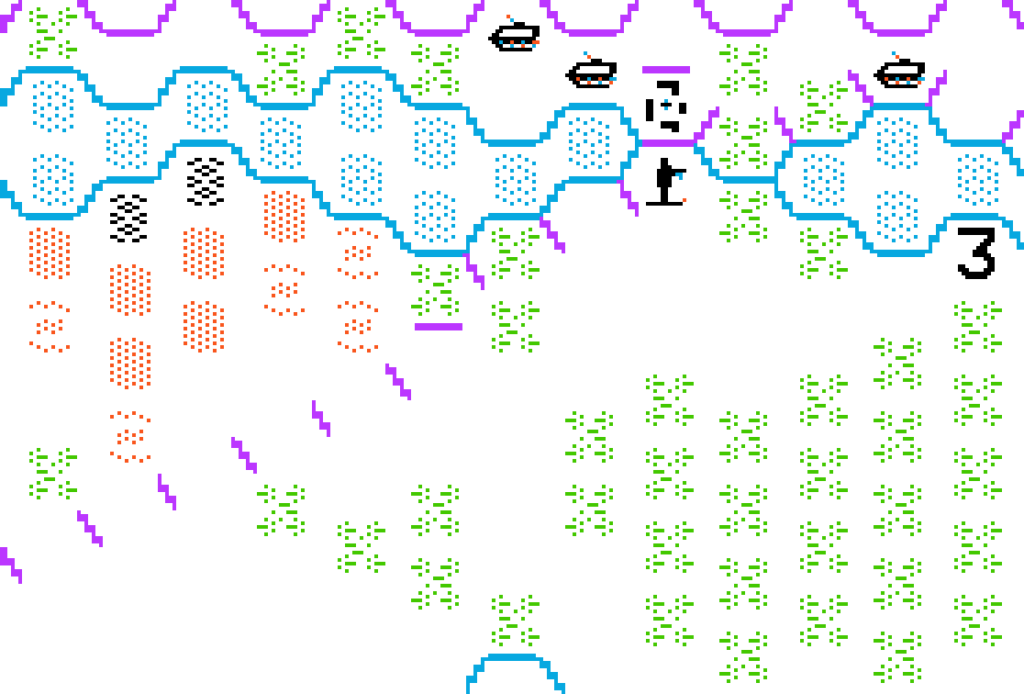
- In the East, the situation becomes dire for a moment. As I was about to destroy the last Soviet survivors, some Soviet mechanized infantry units that had crossed the forest undetected fall on my back, and recover the town. Meanwhile, some units that had fled earlier on come back fully reorganized from the South :
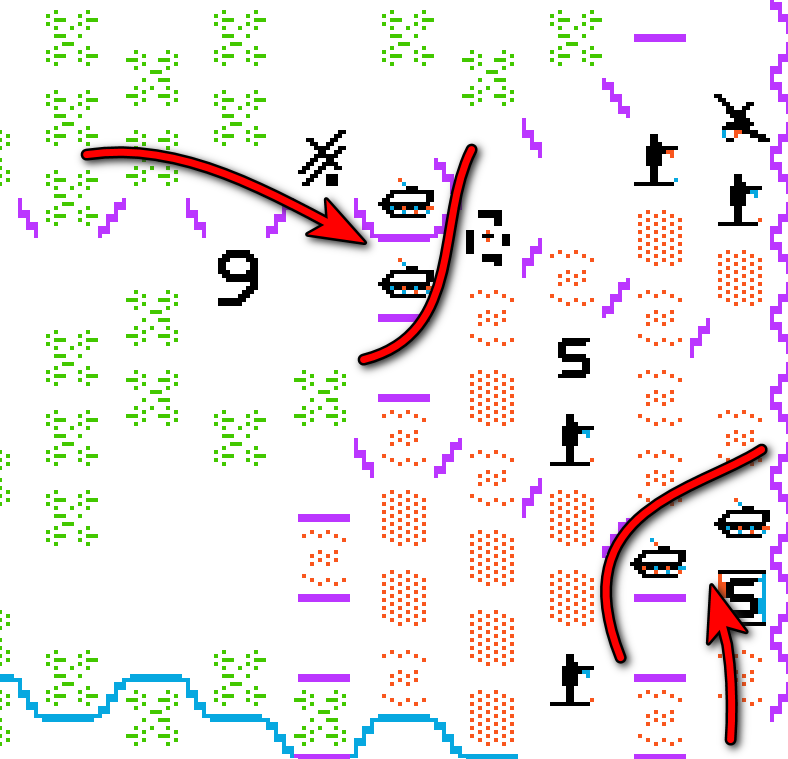
I am saved by more guerilla helicopter support and the fact that the Russians cannot cross difficult terrain, allowing my few units in acceptable condition to hold the line, Thermopylae-style :
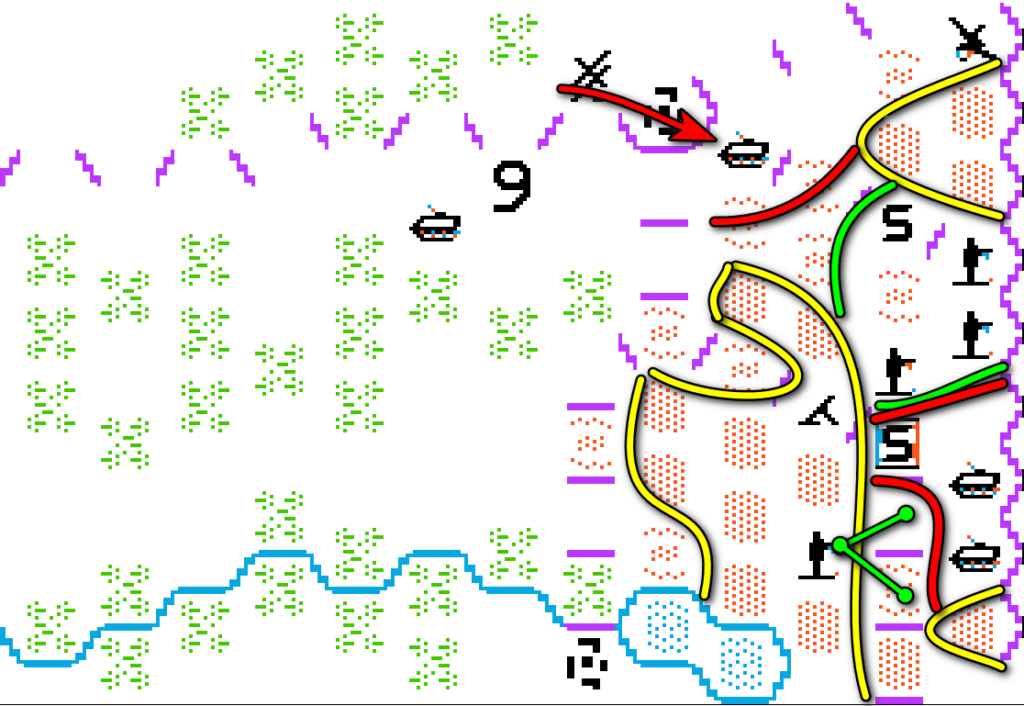
Once the Southern prong of the enemy counter-offensive is destroyed, I can move sufficiently away from the Soviets to hide my units, restore my strength and fight for the town again :
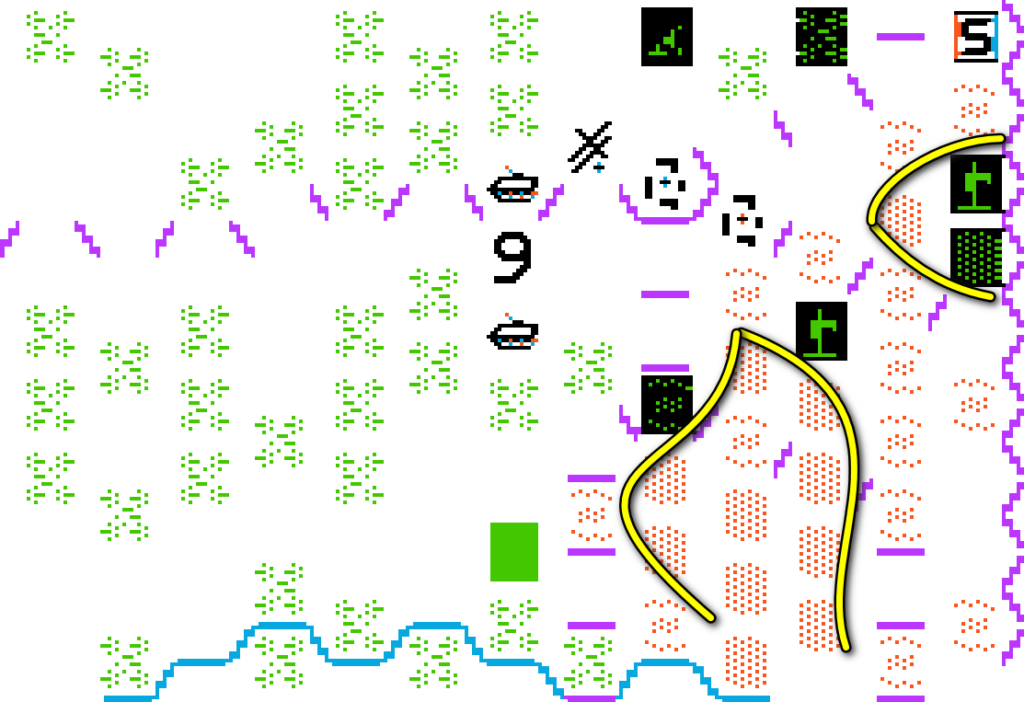
The game ends turn 16.

Well, to be honest, it should have ended turn 16 ; instead it froze at the beginning of turn 17, so I had to reconstruct the end screen below.
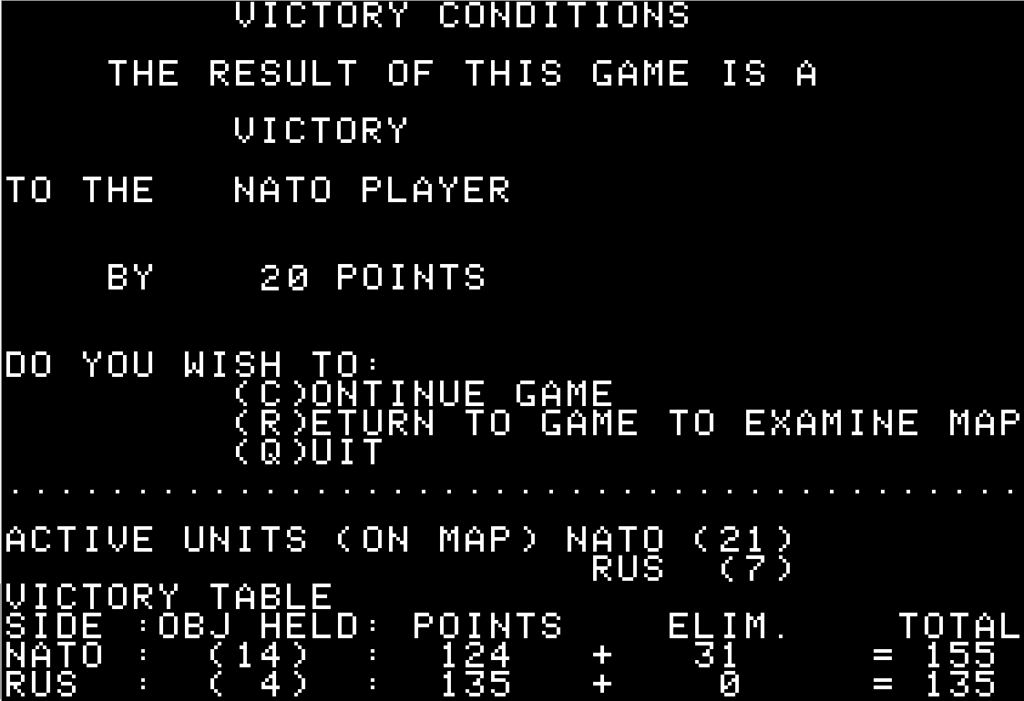
I realize that reading the AAR it looks like the game portrays guerilla tactics accurately, but Finland Norway 1985 has several unrealistic features :
- units from both sides almost always retreat when attacked, even if the attacker is significantly weaker. This creates a repetitive cycle of attack and retreat, which is only broken if the enemy units are surrounded and unable to retreat (unless they are not destroyed in the same turn, in which case they will just move and force the surrounding units to retreat),
- the strength and fatigue of units are almost insignificant when calculating the damage dealt. Two depleted units can easily destroy a healthy one in a single turn,
- units automatically heal [“reorganize”] very quickly as long as they are hidden, even while moving,
It is not the worst game out there, but it is not as interesting as the other games in the series.
Playing as the Soviet side in this game is extremely challenging (you start with 17 units spread out over the map and receive only 11 more units, fighting against 28 Norwegian partisan units) and frustrating :
- some of your units start so isolated that you can essentially count them as lost from the start,
- you almost never see your opponents because, of course, they are all hidden and sometimes in terrain that is unreachable for the Soviets.
- when the Norwegians finally attack, you are bounced all over the map by chain retreats,
The game seems designed to be played as the Norwegians, and it is hard to imagine anyone wanting to play this game as the Soviets in multiplayer.
Still, I had some fun, and it is an interesting finale to a series in which I have invested dozens of hours. Time for the rating & review, focusing on what Roger Keating was doing when he was not working with Ian Trout.